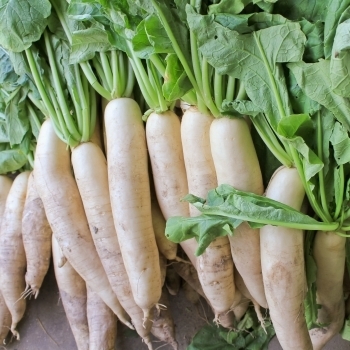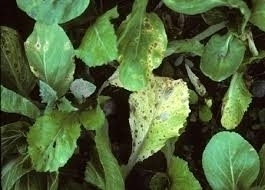Japanese white: Optimum time for sowing is from November-December. It is introduced in India from Japan. In northern plains, it is recommended for late sowing and in hilly areas recommended for cultivation in July-September. Roots are cylindrical and having pure white color. Gives average yield of 160qtl/acre.
Pusa chetki: Optimum time for sowing is from April-August. Early maturing variety suitable for seed production for Punjab region. Its roots are smooth, snow white color and medium long. It gives average yield of 105qtl/acre and seed yield of 4.5qtl/acre.
Pusa Deshi: Suitable for sowing in northern plains. Roots are of pure white color. Ready to harvest in 50-55days after sowing.
Pusa Reshmi: Variety is suitable for early sowing. Ready to harvest in 50 to 60days.
Arka Nishant: Long and pink root variety. Ready to harvest in 50-55days.Gives average yield of 14-16ton/acre.
Pusa Himani: 30-35cm long, white roots ready to harvest in 50-55days after sowing. Gives average yield of 130qtl/acre.
Kashi Shweta: Early maturing variety. i.e. ready to harvest in 30-35days after sowing. Gives average yield of 170-180qtl/acre.
Kashi Hans: Ready for harvesting 40-45days after sowing. Gives average yield of 170-180qtl/acre.
Jaunpuri Giant or Newari: Popular in Jaunpur and nearby areas of UP.
Other states variety
Rapid Red White Tipped: Very early maturing European table type variety. Ready to harvest in 25-30days. Roots are small and bright red colored with pure white flesh color.
Hisar Sel 1: High yielding, medium long, white, smooth and having tender root variety. Gives average yield of 120-130qtl/acre.
White Icicle: Medium dwarf European variety, ready to harvest in 35-45days. Flesh is white, juicy, crispy and having mild flavor.
Punjab Safed: Deshi variety with 30-40cm long roots. Ready to harvest in 45days after sowing. Gives average yield of 80qtl/acre.
Chinese pink: Shinning red skin, crisp solid white flesh. Ready to harvest in 45days after sowing.
Scarlet globe: Round, small roots. Flesh is crisp solid and white. Ready to harvest in 25-30days after sowing.













